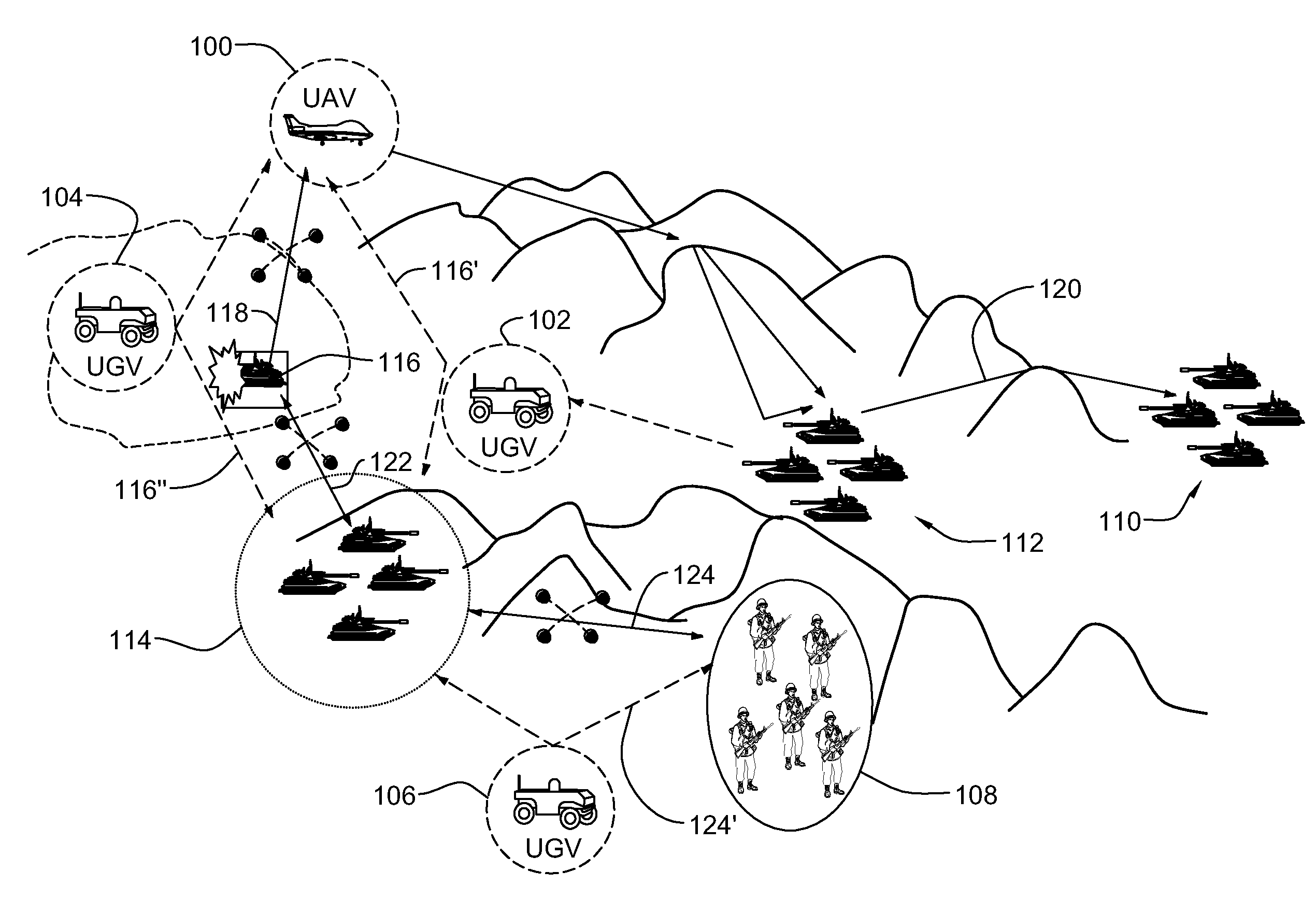Neural network-based mobility management for mobile ad hoc radio networks
a radio network and neural network technology, applied in data switching networks, frequency-division multiplexes, instruments, etc., can solve the problems of network topology change rapidly and unpredictably, nodes may be destroyed, and one can generally not rely on a pre-defined fixed infrastructure within this type of environment, so as to achieve the effect of easy insertion or addition
- Summary
- Abstract
- Description
- Claims
- Application Information
AI Technical Summary
Benefits of technology
Problems solved by technology
Method used
Image
Examples
Embodiment Construction
[0019]Turning now to the drawings and more particularly, FIGS. 1A-C show a battlefield example of a self monitoring ad hoc mobile communications network and graphical representation of the battlefield example according to an advantageous embodiment of the present invention. The preferred self monitoring ad hoc mobile radio network is an Artificial Neural Network (ANN) based communications network. More particularly, a preferred ad hoc mobile radio network is an Adaptive Self Organizing Neural Network (ASONN) of self monitoring artificial neurons or, an ANN element based communications devices, stations or nodes and is referred to herein as a Mobile Communications Neural Network (MCNN). Each node monitors other directly connected nodes to identify and predict disconnections and, expected re-connections. As shown in this example, a MCNN may include both airborne and ground based communications units or stations as nodes and, preferably is hierarchically organized. Although described h...
PUM
 Login to View More
Login to View More Abstract
Description
Claims
Application Information
 Login to View More
Login to View More - R&D
- Intellectual Property
- Life Sciences
- Materials
- Tech Scout
- Unparalleled Data Quality
- Higher Quality Content
- 60% Fewer Hallucinations
Browse by: Latest US Patents, China's latest patents, Technical Efficacy Thesaurus, Application Domain, Technology Topic, Popular Technical Reports.
© 2025 PatSnap. All rights reserved.Legal|Privacy policy|Modern Slavery Act Transparency Statement|Sitemap|About US| Contact US: help@patsnap.com



